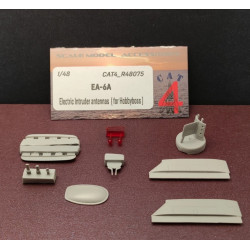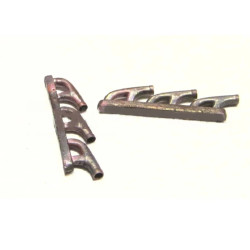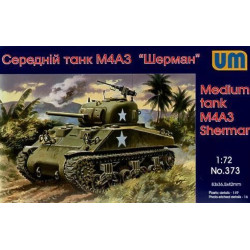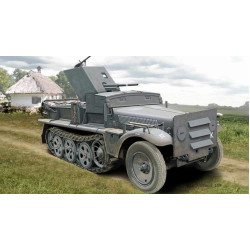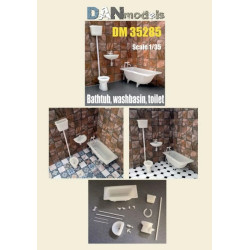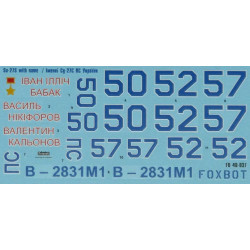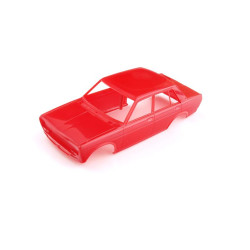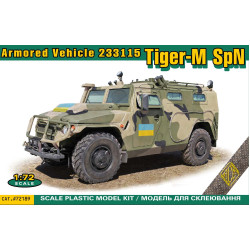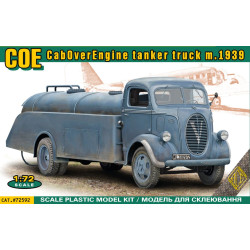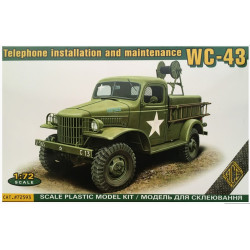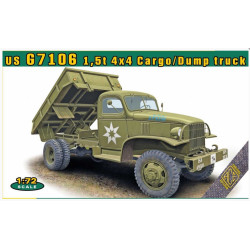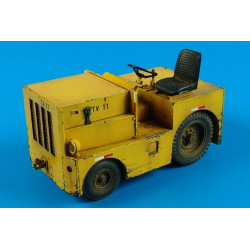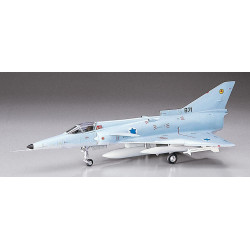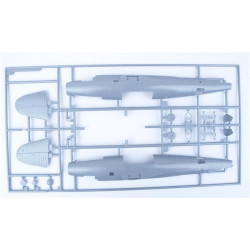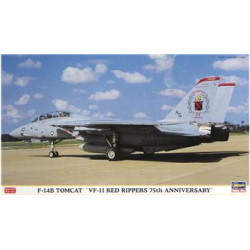













Bluebird 1600 Sss 1969
1/24 Car
Hasegawa 21208
Manufacturer: Hasegawa
Scale: 1/24
Material: Plastic
Paint: Unpainted, Unassembled, Kit do not contain paints and glue.
Condition: New in Box
The Nissan Bluebird is a medium-sized car launched in 1957. It has been Nissan's most internationally recognized sedan, in multiple bodystyles, and is known for its dependability and durability. The Bluebird's traditional competitor was the Toyota Corona from almost the very beginning of the product line. The Bluebird was originally developed to compete with the Corona, as the Corona was developed to continue offering a sedan used as a taxi since Toyota Crown was growing in size. Every generation of the Bluebird has been available as a taxi, duties that are shared with base levelNissan Cedrics.
It is one of the longest-running nameplates from a Japanese automaker. It spawned the S130 Fairlady Z/280ZX, which in turn spawned the Maxima (originally 910 Bluebird/S130 Fairlady Z based), the 160J/710/Violet/Auster/Stanza line, and the U.S.-built Altima line.Export versions were sold variously as the Datsun 510, Datsun 180B (with 160B and 200B versions) and the Datsun Bluebird. The Nissan Bluebird nameplate began appearing around 1982 as the Datsun marque was phased out in favour of Nissan.
From 1981 to 1985, Australia followed the Japanese convention by calling its car the Bluebird, and had a unique, facelifted rear-wheel-drive version for 1984 and 1985. That car was replaced in 1986 by the Nissan Pintara. It would be replaced by the successive Bluebird, also called Pintara, until 1992; then the range was brought in line with the Japanese model, for the U13 series from 1993 to 1997. In an unusual twist, brought about under the short lived Button Plan, the Pintara was also rebadged for Ford Australia as the Ford Corsair, reviving a Ford UK nameplate last used in the 1960s.
In the United States, the Bluebird was eventually sold as the Nissan Stanza. In 1992, the Stanza became the Nissan Altima. Currently, the Bluebird is not sold in North America; in 1998, the Altima was completely redesigned, becoming a model unique to the North American market.
The Bluebird sold in Europe between 1986 and 1990 was in fact a rebadged Nissan Auster—this was replaced by thePrimera in Nissan's European line-up in 1990.
A six-cylinder version called the Maxima was released in the 1980s and became a separate model.Launched in August 1967, it was one of the most comprehensive Bluebird ranges in terms of body styles: a two-door sedan, a four-door sedan, a five-door station wagon, and a two-door coupé (added in November 1968). The "510" still enjoys considerable fame in the U.S.
Like its predecessors, the 510 Bluebird line was imported into New Zealand, this time as a single 1.6-litre, four-speed manual Deluxe model, assembled from CKD kits by Campbell Industries (later Toyota New Zealand Thames assembly plant). Local content included glass, radiator, upholstery, carpet, paint, wiring and numerous other items. A few automatic and twin carburettor SSS versions were imported built-up from Japan, primarily for buyers who had access to funds overseas and could utilise the country's 'no remittance' new car purchase scheme to avoid lengthy waiting lists.The P510 sedan and coupé were built in South Africa [Pretoria] from 1969 to 1974 and had the L16 engine, available as 1600 SSS (twin carbs) and as the single carbed 1600 DeLuxe. An automatic gearbox model was also available for the DeLuxe range. The factory also made two versions of the two-door coupé. They were a 1600GL and a 1800GL. The 1600GL had a single carburetor or twin carbs and 1800 cc cars had twin carbs. The 1600 SSS was also used in motorsport as test cars for Nissan Japan. The cars were used in numerous motorsport rallies by Ewold van Bergen from Pretoria, South Africa, who was a test engineer for Nissan Japan.
| General Product Info | |
| Material | NOT SET |
| Scale | 1/24 |
| Type | NOT SET |
We have the lowest worldwide shipping. And it's totally simple.
EUROPE, USA, CANADA TURKEY, ISRAEL, EGYPT, UE CHINA, JAPAN, HK, S.KOREA | AU NZ MX South America, Asia | |
| Order weight up to 0.22kg or 0.48lb | US$ 8.90 | US$ 8.90 |
| Order weight up to 0.44kg or 0.97lb | US$ 13.95 | US$ 17.90 |
| Order weight over 0.44kg or 0.97lb | US$ 19.99 | US$ 29.99 |
| Order total over $150 | FREE | PROMO US$ 19.99 |
Shipping to some countries not qualifies for the free shipping option but costs not over $29.99 for any sized order. Sorry for that, your location is too far.
- Stock: Out Of Stock
- Model: HA21208
- Weight: 0.59lb
- DATE ADDED: 08/04/2014




